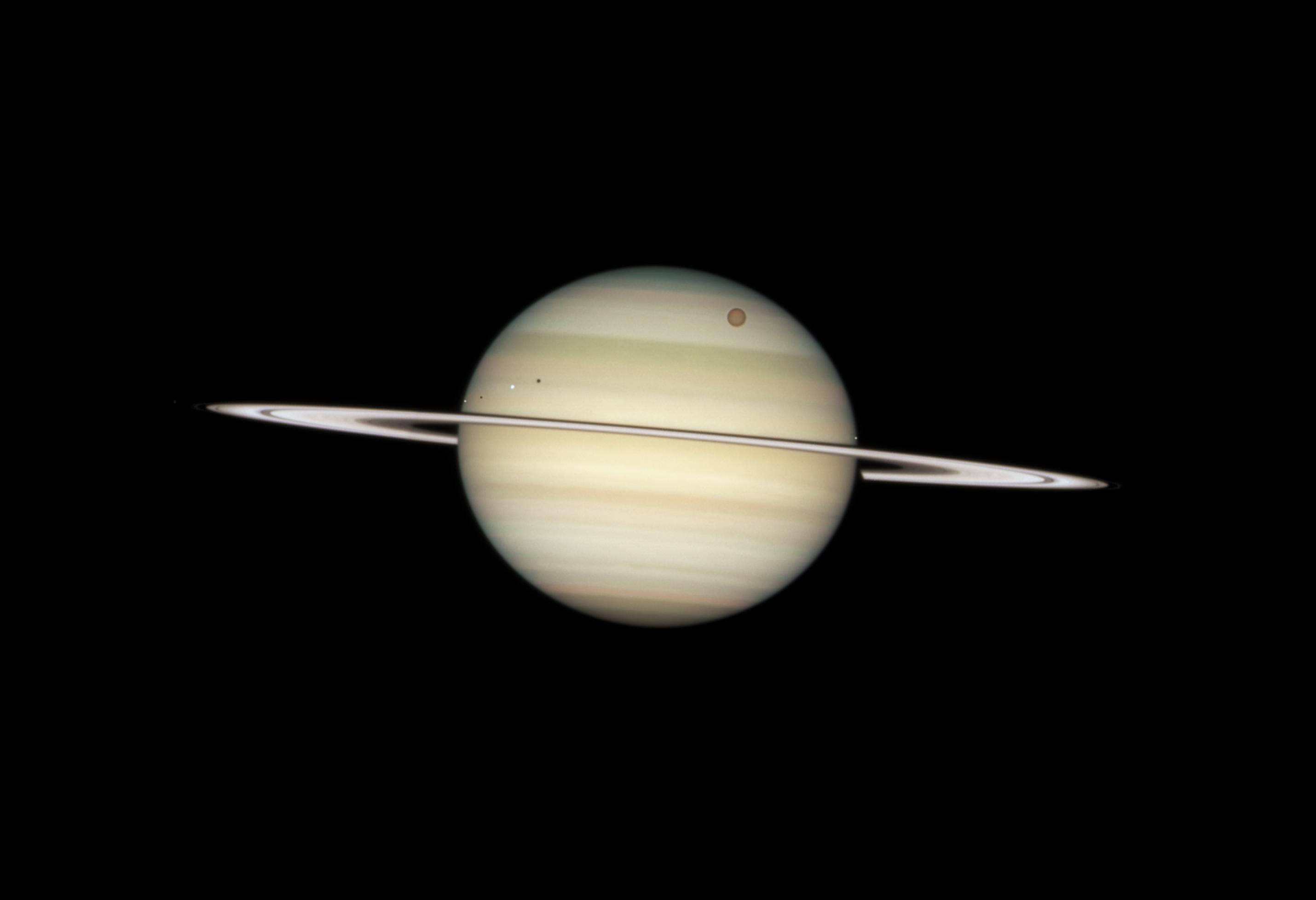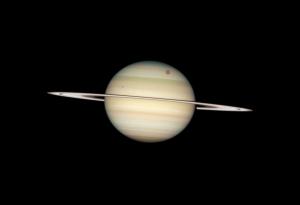
Saturn Moon Transits
Saturn's comparatively paper-thin rings are tilted edge on to Earth every 15 years. Because the orbits of Saturn's major satellites are in the ring plane, too, this alignment gives astronomers a rare opportunity to capture a truly spectacular parade of celestial bodies crossing the face of Saturn. At the upper right is Saturn's giant moon Titan, which is larger than the planet Mercury. The frigid moon's thick nitrogen atmosphere is tinted orange with the smoggy byproducts of sunlight interacting with methane and nitrogen. The smaller, white moons are much closer to Saturn, hence much closer to the ring plane in this view. They are (from left to right) Enceladus, Dione, and Mimas. The Hubble Space Telescope's exquisite sharpness also reveals Saturn's banded cloud structure in this image. For more information, visit: hubblesite.org/news_release/news/2009-12
- X



























